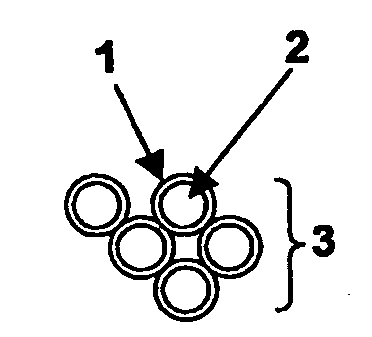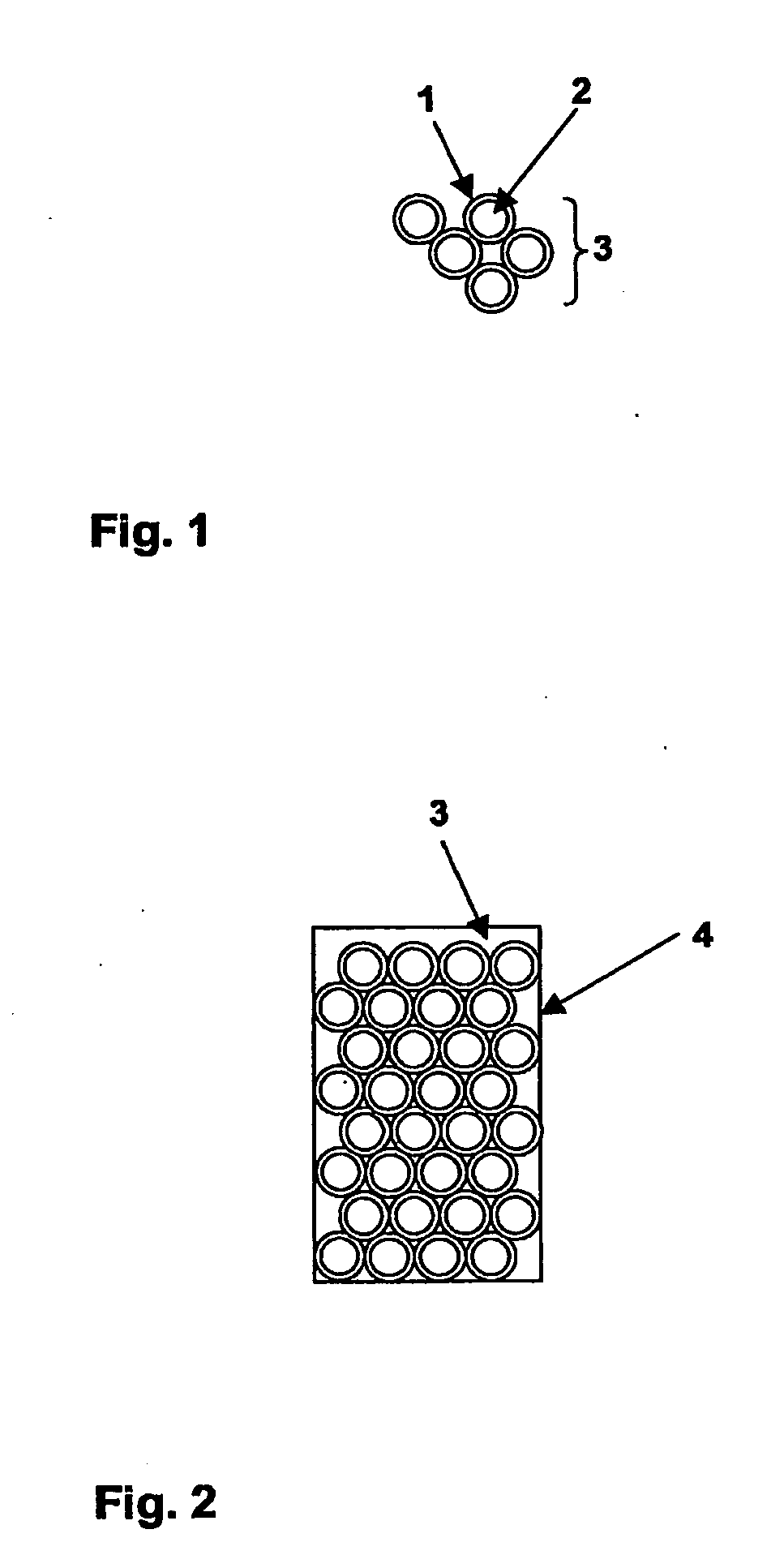Filler material, especially for filling cavities, especially of structural elements, method of production and structural element
a filling material and filling technology, applied in the field of filling cavities, can solve the problems of affecting the sintering resistance of such coatings, weak viscosity of such epoxy resin systems, and high cost of rendering such coatings more susceptible to sintering and more reactive at higher temperatures
- Summary
- Abstract
- Description
- Claims
- Application Information
AI Technical Summary
Benefits of technology
Problems solved by technology
Method used
Image
Examples
example 1
Coated Spheres, Viscid Surfaces, Resin System (SikaPower ®9496 / 3).
[0024]In this case, hollow steel spheres 3.2 mm in diameter, were used at a packed density of 0.36 g / ml. Employed as the duroplastic 1 for the coating material was a commercially-available structural agglutinant (SikaPower ®0496 / 3). Assuming homogenous coating of the spheres, it was anticipated that the coat enveloping the spheres would have the following thicknesses:
Calculated layer thicknessPercent by weight agglutinantof the coat / agglutinant layer in μm101220303050
[0025]Both spheres and agglutinant (total mass 70 g) were transferred into a beaker and heated to 80° C. Coating took place inside a Speedmixer DAC 150 FV (centrifugal mixer manufactured by Hauschild). This yielded homogenously-coated, slightly viscid, readily transportable spheres. The slightly viscid spheres were then poured into a cylindrical mould that had been treated with a separating agent (substituting for a cavity inside a structural element) and...
example 2
Coated Spheres, Dry Surfaces, Impact-Resistant Modified Epoxy Resin System, Dusted with Butvar
[0027]Duroplastic or agglutinant and process method as in Example 1. The example involving 30% by weight agglutinant (70 g total weight) was repeated. Immediately following coating, the spheres were dusted with 5 g polyvinylbutyral Movital 60 HH. This yielded pourable spheres, which were then transferred into a cylindrical mould, whereby after curing for 30 min. at 180° C., a rigid cylinder was obtained.
example 3
Coated Spheres, Impact-Modified Epoxy Resin System
[0028]A reactive impact-modified epoxy-resin agglutinant was prepared by mixing 100 g of an addition compound comprising bisphenol-A-diglycide ether with dimeric fatty acid (Epoxy Value=2.8 epoxy equivalents / kg) together with 100 g solid epoxy resin (GT 7004, manufactured by Vantico AG, Epoxy Value=1.4 epoxy equivalents / kg) and 50 g of a fluid epoxy resin (GY 250 manufactured by Vantico) at 90° C. inside a planetary mixer.
[0029]Added to the homogenous mixture were 125 g of a reactive polyol (a polyol comprising epoxide groups) 130 g light filler (Extendospheres serving to lower the density of the duroplastic) and 6.5 g pyrogenic silicic acid (Cabosil TS 720, manufactured by Cabot) as well as 12.3 g dicyandiamide.
[0030]The reactive polyol comprising epoxy groups was prepared as follows: 200 g PolyTHF 2000 (PTMEG polytetramethylene ether glycol having a molecular weight of 2000 g / mol OH number 57.5 mg / g KOH) were dessicated inside a va...
PUM
| Property | Measurement | Unit |
|---|---|---|
| Thickness | aaaaa | aaaaa |
| Thickness | aaaaa | aaaaa |
| Thickness | aaaaa | aaaaa |
Abstract
Description
Claims
Application Information
 Login to View More
Login to View More - R&D
- Intellectual Property
- Life Sciences
- Materials
- Tech Scout
- Unparalleled Data Quality
- Higher Quality Content
- 60% Fewer Hallucinations
Browse by: Latest US Patents, China's latest patents, Technical Efficacy Thesaurus, Application Domain, Technology Topic, Popular Technical Reports.
© 2025 PatSnap. All rights reserved.Legal|Privacy policy|Modern Slavery Act Transparency Statement|Sitemap|About US| Contact US: help@patsnap.com


